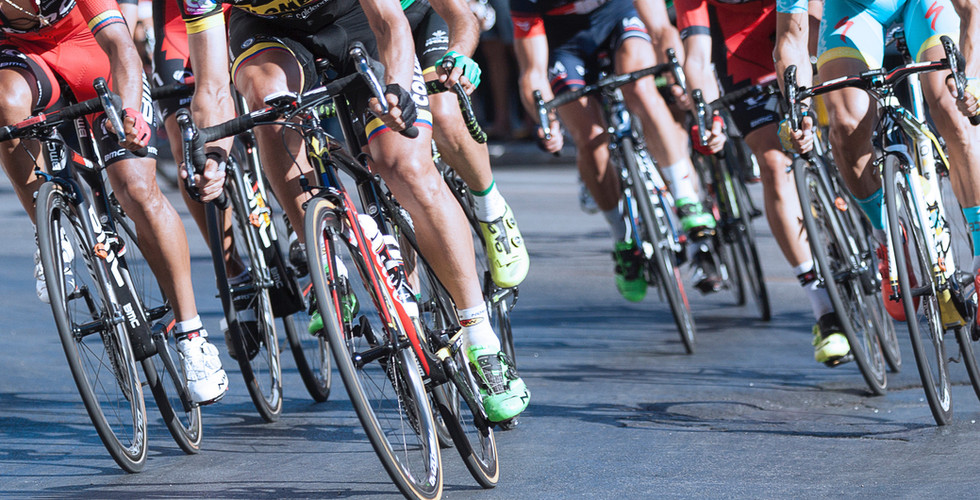Case Study :Hip Pain after Cycling (30-year-old Female, Educator)
- Director Sho Niwano / 院長 庭野 祥

- 2023年9月21日
- 読了時間: 3分
I've been riding a road bike as a hobby for several years.
On weekends, I do long-distance training and have recently started joining races.
About two weeks ago, I began to feel gradual pain in the front of my hip joint after cycling.
The pain didn't go away, so I visited an orthopedic surgeon who advised me to avoid intense exercise because the pain was due to a shallow hip joint.
There was no specific treatment, and he mentioned dealing with the pain if the hip joint dislocates.
Since then, the hip pain has stayed the same, and walking still feels uncomfortable and challenging.
I still want to continue riding my road bike, so I hope to properly heal my hip joint if possible.
Main Symptoms of Individual C
Pain in the front of the right hip joint after cycling.
Sensation of catching in the front of the right hip joint while cycling.
Beginning to experience lower back pain.
The pain has been consistently at the same intensity.

Treatment Progress After Sessions:
First session: In chiropractic treatment, adjustments were made to the movement of the pelvis, hip joint, and muscle balance.
Second session: Continued the adjustments from the first session. The intensity and frequency of hip joint pain decreased by about 30% compared to the previous session.
Third session: Conducted treatment to improve the balance and range of motion of the lower body, including below the knee. The pain still appeared after exercise, but it became less bothersome in daily activities.
Fifth session: As the symptoms had improved before the start of treatment, the treatment was concluded for the time being.
Subsequently, while continuing road cycling, the individual has been coming in for treatment approximately once a month to manage their condition.
Comments from the Chiropractor

Actually, there has been a sense of discomfort in the hip joint since around middle school, and the pain would come and go repeatedly.
The hospital's diagnosis mentioned that the hip joint "fits shallowly," although this was not considered to have a direct relationship with the current symptoms. *It does not mean a good fit of the joint.
One major reason is believed to be the "waves" in how the pain was perceived in terms of timing and intensity.
While the shape of the joint is considered to be consistently shallow, in C-san's case, symptoms occurred after specific movements or exercises.
Given this, it was thought that by adjusting the muscles and movements involved during such actions, we could aim for an improvement in symptoms.
With each subsequent treatment, C-san was able to move the hip joint without pain, and the condition became more stable.
▼ AC Chiropractic Recommended: "Starting Lower Back Pain Care with Just One Tennis Ball"
In this section, we introduce a simple and effective lower back pain care routine using just one tennis ball, recommended by AC Chiropractic.
I'll now share with C-san two self-care methods that were recommended for practice.
The first method addresses the often-related pain in the front side of the hip joint, which is actually connected to the muscles in the buttocks.
The front side of the hip joint and the buttocks have an antagonistic (opposing) relationship, carefully maintaining a delicate balance with each other.
Let's start by using a tennis ball to soften the muscles in the buttocks, making it easier to move the hip joint.
▼ Psoas Major Muscle Stretch (Psoas Stretch)
Next, let's talk about a stretch for the psoas major muscle, also known as "chouyoukin" in Japanese.
The second self-care method is a stretch for the psoas major muscle .
This muscle is located on the front side of the hip joint. The position while cycling, as well as prolonged periods of sitting, can unintentionally cause this muscle to tense up. This tension can lead to difficulty moving the hip joint, pain, and increased strain on the lower back.
Given that it's a major muscle, holding the stretch for about 30 seconds to 1 minute in a slow, gentle manner is effective.
It's crucial to engage both the buttocks and the psoas major muscle, so please try this stretch and incorporate it into your routine.
▼関連記事を探す




